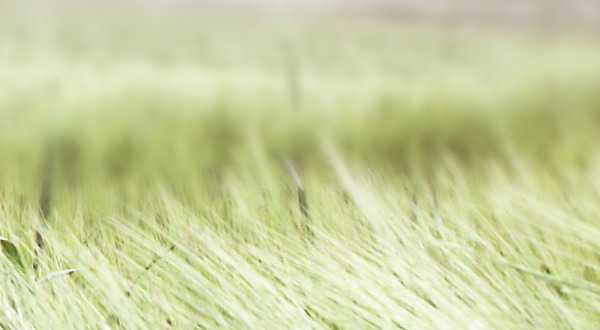Now - 12:27:46
Types of synthetic fabrics, their characteristics
Modern technologies have touched all spheres of human life. Perhaps the textile industry is the most striking example of a science put at the service of everyday life. Thanks to chemical synthesis, man has learned to obtain fibers with the desired properties. It is necessary to distinguish between artificial and synthetic fabrics.
Synthetics are made from polymers obtained by certain chemical reactions. Its raw materials are petroleum products, natural gas or coal. Workwear, protective clothing for extreme conditions, and sports uniforms are made from synthetic fabrics with special properties.
Artificial fibers are produced by physical processing of raw materials. The most famous example of such a fabric is viscose, obtained from cellulose (wood).
Fabrics made of synthetic fibers have a number of advantages and disadvantages compared to natural materials.
General properties of synthetic fibers
Despite all their diversity, most artificial materials have common features. The advantages of synthetic fabrics include the following qualities.
- Durability. Artificial fabrics have increased wear resistance, are not subject to rot, damage by pests and mold fungi. The special technology of bleaching and subsequent staining of the fiber ensures color fastness. Some groups of synthetic fabrics are not resistant to sunlight.
- Ease. Synthetic clothing weighs much less than its natural counterparts.
- They dry quickly.Most synthetic fibers do not absorb moisture or have water-repellent properties, that is, they have low hygroscopicity.
- Due to large-scale industrial production and the low cost of raw materials, most artificial fabrics have a low cost. In production, they get high labor productivity and low cost, which stimulates the development of the industry. Many manufacturers adjust the technological characteristics of the material in accordance with the wishes of large customers.

Recommended
Studded bracelets at the height of fashion
Spikes became incredibly fashionable in 2025, emerging from the world of informal culture. Since that time, fashion designers all over the world have been creating dresses, shoes, rings, bags, earrings and bracelets with spikes.When talking about lea...
Trampoline for children – help for parents!
With the onset of cold weather, when the weather is bad outside, parents are increasingly thinking about the problem of what to do with their children, what games to come up with. After all, everyone knows that children are restless, they love active...
East Siberian Husky - breed description
Since ancient times, hunters of Eastern and Central Siberia have been famous for their skills. And this is not surprising, because it was in these regions that there were always many valuable animals, hunting which was a pleasure. Accordingly, it was...
Disadvantages are caused by the fact that artificial material can have a bad effect on a living organism.
- Synthetics accumulate static electricity (electrified).
- Allergies may occur, individual intolerance to chemical components.
- Most artificial fabrics do not absorb moisture well-accordingly, they do not absorb sweat and have low hygienic properties.
- They do not allow air to pass through – this is also important for the production of clothing and underwear.
Some properties of synthetic fabrics can have both positive and negative meanings, depending on how the material is applied. For example, if the fabric does not allow air to pass through, it is unhygienic for everyday clothing. But the upper workwear made of such material will be very appropriate for protection from adverse weather conditions.
Production of synthetic fabrics
The first patents for the invention of synthetic fibers date back to the period of the 30s of the last century. In 1932, Germany mastered the production of polyvinyl chloride fiber. In 1935, polyamide was synthesized in the laboratory of the American company DuPont. The material was called "nylon". Industrial production of it began in 1938, and a year later it was widely used in the textile industry.
In the USSR, the course for the widespread introduction of the achievements of chemical science was taken in the 60s. Initially, synthetics were perceived as a cheap substitute for natural fabrics, then it was used to make workwear and protective suits. With the development of the scientific base, they began to create fabrics with different properties. The new polymers have undeniable advantages over natural fabrics: they are lighter, stronger and more resistant to aggressive environments.
Artificial and synthetic fabrics differ in the method of manufacture and indicators of the economy of production. Raw materials for the production of synthetics are much cheaper and more affordable, so this particular industry has received priority in development. Fiber macromolecules are synthesized from low-molecular-weight compounds. Modern technologies ensure the production of a material with pre-defined characteristics.
Filaments are formed from melts or solutions. They can be single, complex, or in the form of bundles to produce fibers of a certain length (then yarn is produced from them). In addition to threads, film materials and stamped products (parts of shoes and clothing) are formed from the original synthetic mass.
Synthetic varieties
At present, several thousand chemical fibers have been invented, and new materials appear every year. The chemical structure all kinds of synthetic fabrics are divided into two groups: carbon-chain and heterochain. Each group is divided into subgroups that have similar physical and operational properties.
Carbon-chain synthetics
The chemical chain of the macromolecule of carbon-chain synthetic fabrics consists mainly of carbon atoms (hydrocarbons).
Heterochain synthetics
These are fabrics made of synthetic fibers, the molecular composition of which, in addition to carbon, includes atoms of other elements: oxygen, nitrogen, fluorine, chlorine, sulfur. Such inclusions give the source material additional properties.
Types of synthetic fabrics of the heterochain group:
- Polyester;
- Polyamide;
- Polyurethane.
Lycra: polyurethane synthetic fabrics
Names used by trade corporations: elastane, lycra, spandex, neolan, dorlastan. Polyurethane filaments are capable of reversible mechanical deformations (like rubber). Elastane is able to stretch 6-7 times, freely returning to its original state. It has a low temperature resistance: when the temperature rises to +120°C, the fiber loses its elasticity.
Polyurethane threads are not used in their pure form – they are used as a frame, winding around other fibers. The material containing such synthetics has elasticity, stretches well, is elastic, resistant to abrasion, and perfectly passes air. Things made of fabrics with the addition of polyurethane threads do not crumple and retain their original shape, are resistant to light, and retain their original color for a long time. The fabric is not recommended to be strongly wrung out, twisted, dried in a stretched form.
Nylon: polyamide synthetic
The material got its name due to the amide group that is part of the fabric. Nylon and nylon are the most well-known representatives of this group. Main properties: increased strength, holds its shape well, is not subject to rot, light. At one time, nylon replaced the silk used for making parachutes.
Synthetic fibers of the polyamide group have low resistance to high temperatures (begins to melt at +215°C), they turn yellow in the light and under the influence of sweat. The material does not absorb moisture and dries quickly, accumulates static electricity and does not retain heat well. It is used to make women's tights and leggings. In the composition of the fabric, nylon and nylon are introduced in an amount of 10-15%, which increases the strength of natural materials without compromising their hygienic properties. Socks and knitwear are made from such materials.
Other trade names for synthetic materials of the polyamide group are anide, perlon, meryl, taslan, Jordan, and helanka.
Velsoft-a thick fabric with a pile, is a competitor to mahra. It is used to sew children's clothes, dressing gowns and pajamas, things for the home (towels and blankets). The material is pleasant to the touch, well-permeable, does not crumple, does not sit down, does not shed. Resistant to washing, dries quickly. The printed pattern does not fade with time.
Dacron: polyester fibers
Polyester synthetics have increased elasticity, wear resistance, fabrics made of it do not sit down, do not crumple and keep their shape well. The main advantage compared to other groups of synthetic fabrics is increased heat resistance (withstands over + 170 °C). The material is hard, does not absorb moisture, does not collect dust, does not fade in the sun. In its pure form, it is used for the manufacture of curtains and curtains. In a mixture with natural fibers used for the manufacture of clothing and costume fabrics, as well as material for coats and artificial fur. Polyester fiber provides resistance to abrasion and creasing, and natural threads provide hygiene that synthetic fabrics do not have. The names of the fabrics of polyester material: polyester, polyester, polyester, can be proposed, tergal, diolen, Dacron.
Fleece is a synthetic soft polyester fabric, similar in appearance to sheep wool. Fleece clothing is soft, light, warm, breathable, elastic. The material is easy to wash, dries quickly and does not need ironing. Fleece does not cause allergies, so it is widely used for the manufacture of children's clothing. Over time, the fabric stretches and loses its shape.
Polysatin is made from polyester in its pure form or in combination with cotton. The material is dense, smooth and slightly shiny. It dries quickly, does not shrink, does not wear out, does not shed. It is used for the manufacture of bed linen, household products (curtains, tablecloths, upholstery for furniture), home clothing, ties and scarves. Very popular today, bed linen with a 3D pattern is made from polysatin.
Acrylic: polyacrylonitrile materials
In terms of mechanical properties, it is close to wool fibers, so acrylic is sometimes called "artificial wool". Synthetics are resistant to sunlight, they are heat-resistant, and they hold their shape perfectly. Does not absorb moisture, hard, electrified, worn.
It is used in combination with wool for the production of fabrics for furniture, children's mattresses, sewing outerwear and making artificial fur. Acrylic does not form pellets, which makes it an indispensable addition to wool yarn for knitting. Things made of combined yarn stretch less, they are more durable and light.
Trade names of acrylic materials: akrilan, Nitron, cashmilon, dralon, Dolan, orlon.
Spectrum and dynem: polyolefin fibers
In this group, polyethylene and polypropylene fibers are distinguished. The lightest of all types of synthetics, polyolefin materials do not sink in water, are characterized by low hygroscopicity and good thermal insulation properties, the stretchability of the fiber is almost zero. They have a low temperature resistance – up to +115°C. They are used in the creation of double-layer materials, for sewing sports and fishing clothing, filter and upholstery materials, tarpaulins, carpets. In combination with natural fibers-for the production of underwear and hosiery.
Trade name: spectrum cinema, acmilan, herculon, westren found, meraklon.
Polyvinyl chloride synthetic fabrics
The material is characterized by high resistance to chemically aggressive substances, low electrical conductivity and instability to temperature influences (it breaks down at 100°C). After temperature treatment, it shrinks.
In its pure form, protective clothing is made from it. With its help, a dense synthetic fabric is obtained – artificial leather, artificial fur and carpet coverings are also made.
Trade names: teviron, chlorin, vignon.
Polyvinyl alcohol fibers
This group includes final, Milan, - membrane vinylon, kuralon, vinylon. They have all the advantages of synthetics: strong, wear-resistant, resistant to light and temperature influences. In terms of extensibility and elasticity, they have average indicators. A distinctive feature – they absorb moisture well, products made of synthetic fabrics of this group have a high hygroscopicity, comparable to the properties of cotton products. Under the influence of water, the vinyl lengthens and shrinks slightly, its strength decreases. Compared to other chemical fibers, it is less resistant to chemical influences.
Vinol is used for the manufacture of clothing, underwear, in combination with cotton and viscose - for the production of hosiery. The material does not roll, does not wipe, has a pleasant shine. The disadvantage of vinol products is that they quickly get dirty.
Mtilan is used for the production of surgical threads.
The combination of different fibers gives interesting technological characteristics. A striking example is the well-known microfiber today. It is made from a combination of nylon and polyester fibers. Microfiber does not roll, does not shed, has increased hygroscopicity, and dries quickly. It is used for the production of knitted fabrics, woven and non-woven fabrics. Depending on the thickness of the fiber and its modifications, the softness and wear resistance of the final product vary. Microfibre is not mixed with other fibers, the care of the products is extremely simple – they are not afraid of washing, dry cleaning and temperature influences. Thanks to the many air pores, the fabric helps to maintain an optimal body temperature, but at the same time perfectly protects from the wind. Sports and outerwear, home textiles, napkins and cleaning sponges are made from microfiber.
As you can see, chemically synthesized fibers are widely used in the production of light industry goods. They are used to make sports and workwear, fabrics for furniture and interior decoration, the entire range of everyday clothing: from underwear to materials for coats and artificial fur. Modern fabrics have a number of advantages that are not available to their predecessors: they can be hygroscopic, "breathable" and retain heat well. The combination of different fibers in a single thread, as well as the creation of multi-layered fabrics allow manufacturers to fully meet the needs of the modern world.
Article in other languages:
AR: https://tostpost.com/ar/home-and-family/23011-782915.html
KK: https://tostpost.com/kk/y-zh-ne-otbasy/37705-t-rler-sintetikaly-matalar-olardy-sipattamasy.html
PT: https://tostpost.com/pt/a-casa-e-a-fam-lia/37111-tipos-de-tecidos-sint-ticos-sua-mat-ria.html
UK: https://tostpost.com/uk/d-m-s-m-ya/37528-vidi-sintetichnih-tkanin-h-harakteristika.html

Alin Trodden - author of the article, editor
"Hi, I'm Alin Trodden. I write texts, read books, and look for impressions. And I'm not bad at telling you about it. I am always happy to participate in interesting projects."
Related News
The day of the Russian flag. The holiday scenario
How many holidays there are in our lives – and birthdays, and anniversaries, and New Year, and Christmas, and many others. However, there is one day in the year that is considered a significant date for all Russians – it is the Da...
All-Russian Civil Defense Day (October 4): history and features of the holiday
In the middle of autumn, Russia celebrates the Day of Civil Defense. On October 4, we all remember how important protection and safety are for the people of the country. Why this particular date? How did it all start? How long has...
Catfish: the birthplace of aquarium fish
Few aquarists know that the pets and ornaments of their aquarium-catfish-are the oldest fish on the planet that have survived to this day.Catfish-cute inhabitants of aquariumsFreshwater reservoirs of the world number about two tho...
We use paper kitchen towels in everyday life
In the modern world, paper kitchen towels are used almost everywhere where you need to cook something. They are used by ordinary housewives, professional cooks. And this is not surprising. No need to wash standard kitchen towels, ...
Coffee maker-turka electric: operation reviews
Relatively recently, a new device has joined the ranks of household appliances – an electric turk, designed for convenient and fast brewing of delicious and invigorating coffee. The electric drill is a compact and functional devic...
How to come up with funny birthday scenes for adults? Ideas and scenarios for comic scenes
Birthday – a solemn date. Of course, to do on this holiday without a variety of games and fun is impossible. Quite an interesting moment – funny scenes for a birthday. Such entertainments literally "blow up" a holiday, make it bri...






















Comments (0)
This article has no comment, be the first!